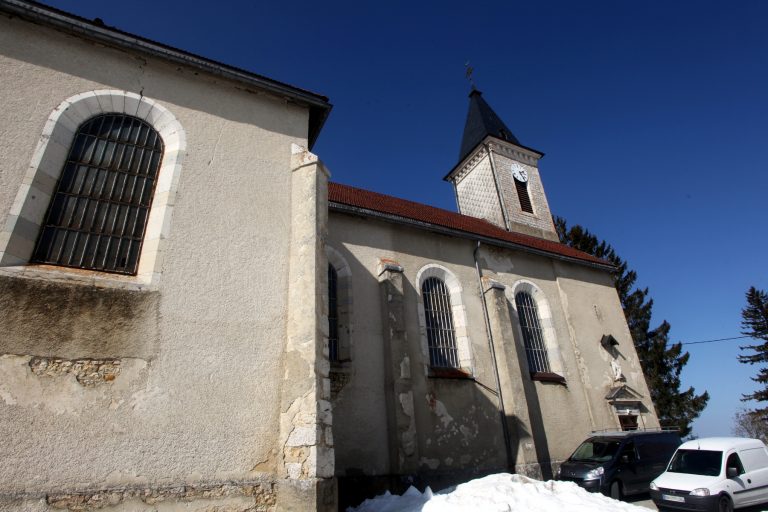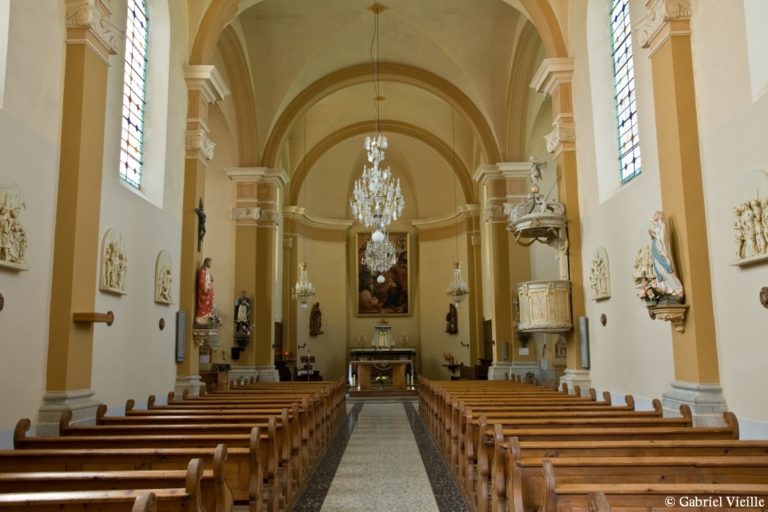In 2024 > Gilles FURTWÄNGLER
In 2018 > Sylvie Auvray – Les bâtons d’Alexandre
It was not until the 17th century that Chatelblanc had its own chapel built at the initiative of the lord Pierre Blondeau and consecrated in 1665 by Antoine I de Grammont, archbishop of Besançon.
This building quickly proved too cramped to accommodate all the faithful. The chapel was enlarged at the end of the 18th century but was destroyed by a fire as well as the presbytery and several houses in 1759. Immediately restored, it was partially destroyed by a new fire in the village in 1775. It was again restored then enlarged and redeveloped in 1827.
The current church, dedicated to the Nativity of Notre-Dame, was built from 1854 to 1861 according to the plans of the architect Painchaux from Besançon who had chosen a classic Latin cross plan: a bell tower-porch opens onto a single nave with 3 bays covered by a barrel vault, a transept and a choir. The architectural decor remains faithful to the 19th century tradition by borrowing all its elements from antiquity. It houses several interesting works: a statue of Saint Alexander, a painting of the Annunciation (on the wall at the apse of the choir) and the shrine containing the relics of Saint Alexander. According to the inventory of the primitive chapel it does not seem that the current furniture elements come from the first chapel apart from the side altars, the preaching pulpit, the statues and the choir painting undoubtedly recovered in the church of the Eighteenth century.
As soon as the relics of Saint Alexandre were translated to Chatelblanc (September 29, 1684), the faithful present noted various irrational manifestations considered miraculous. Each year, the anniversary of the translation became an opportunity to organize a more or less frequent pilgrimage: 8000 people in 1784, 3000 in 1834, 5000 in 1884, 2000 in 1934.
Text by Joël GUIRAUD
GPS : 46,673250 / 6,114818


